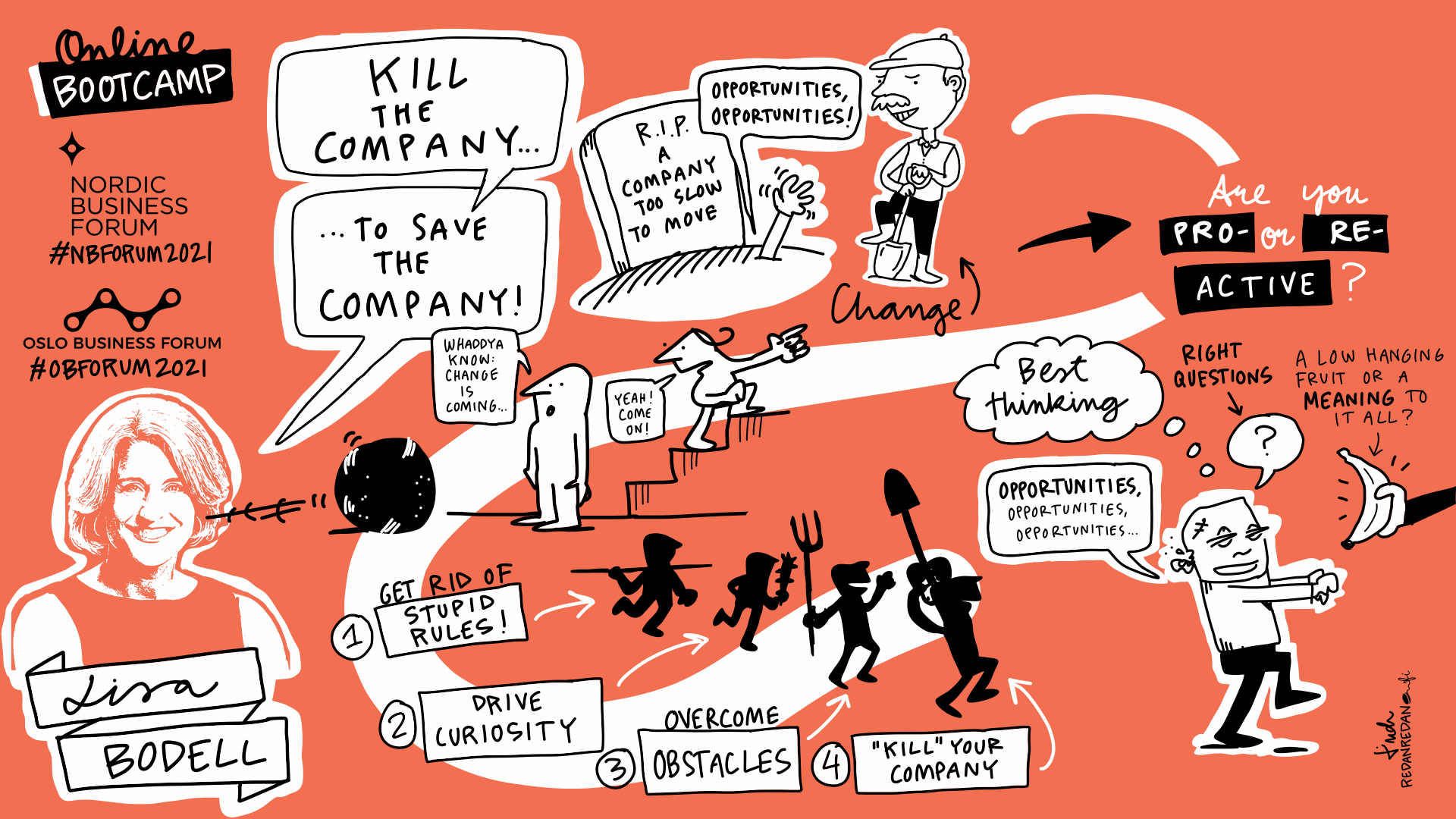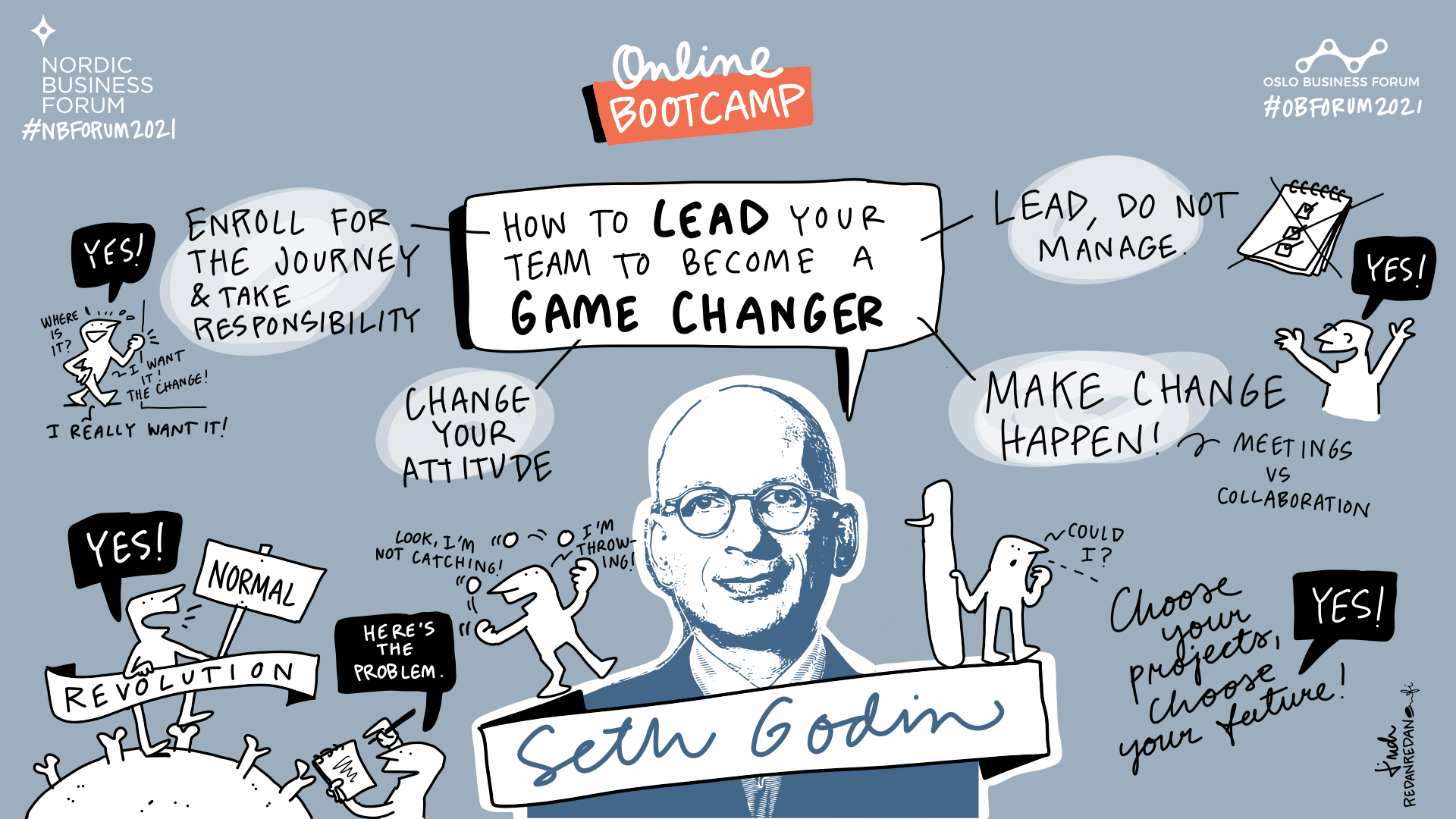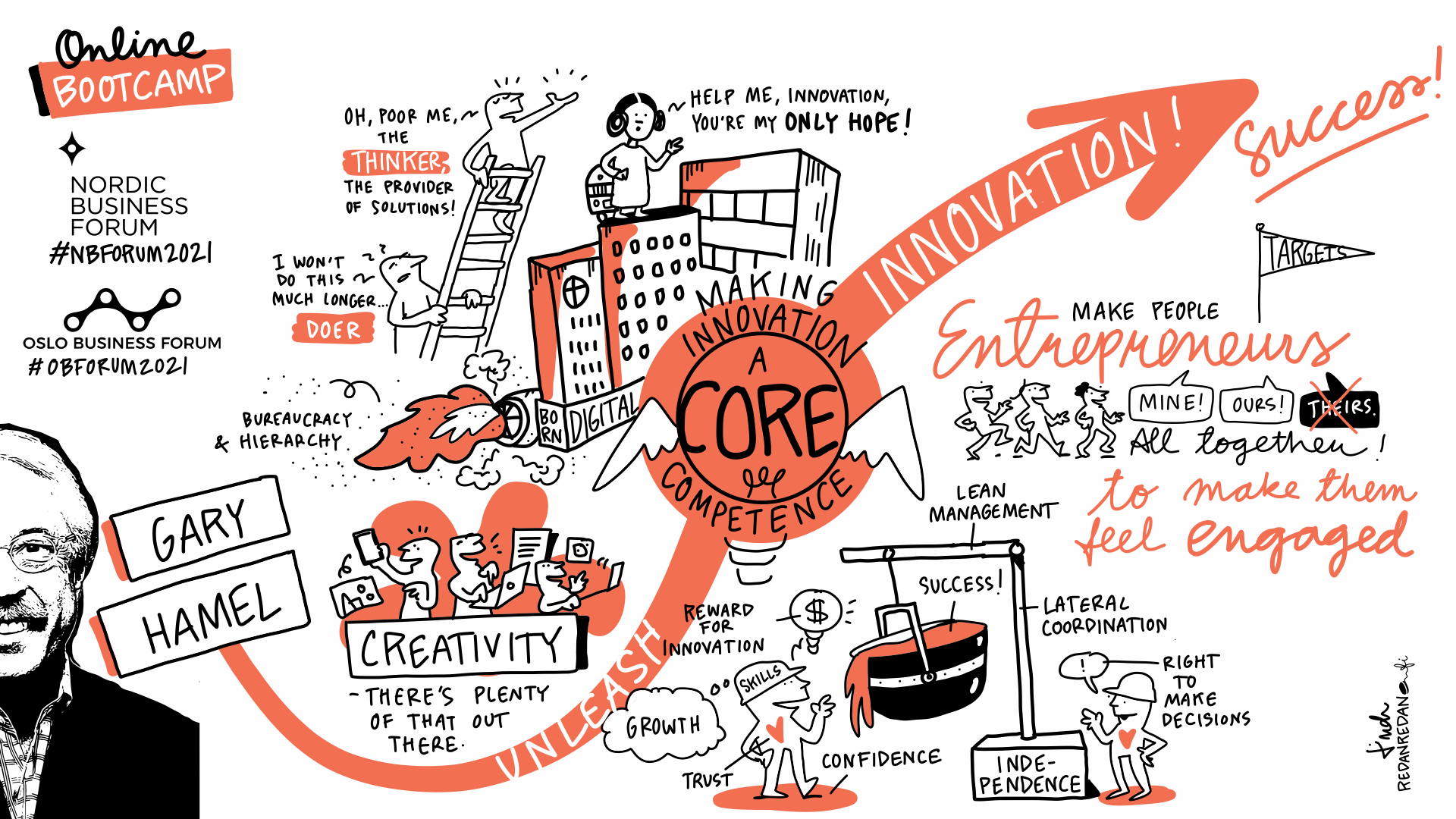“I hope that more and more change is going to be socially constructed. It will not cascade down, it will cascade up. I think that’s the only way to change something that is big and complex.”
The last session of the online bootcamp, brought Gary back in the spotlight to highlight some of the key insights of the day. He also shared some next steps he recommends you to take after the event.
.jpg?width=3000&name=MaxEmanuelson__MAX6306%20(1).jpg)
Focus on What Could Be
First, Gary wanted to underline how Lisa spoke about optimism. He acknowledged that “change creates both opportunities and threats”, but also emphasized that organizations should develop and build around the opportunities.
Gary elaborated that your future depends largely on how your organization sees and confronts the world. “A lot of organizations look at the future through a defensive lens. But the reality is that innovation, disruptive and otherwise, usually expands the markets; it creates more opportunities.”
So, instead of trying to protect “what is”, focus on creating “what could be”.

Be Clear About Your Future
Next, Gary highlighted Lisa’s point on the importance of being clear about what you are becoming. He believes this to be crucial and often does an exercise with the leaders he works with in order to get clarity on their future vision. The exercise goes like this:
Get together with your team and ask them the question: “Over the next few years, what are the 3-4 ways in which we are going to reinvent ourselves and the world around us?” Ask people to write down a few from-to statements. After that, go through the answers together and consider the following questions with your team:
- Do we have a consensus; a shared point of view about where we are going?
- Would this point of view surprise our competitors?
- Is it clear to us what we are going to do over the next days and weeks to bring this future into our focus?
“You have to give people a view of the future that is compelling enough and that will overcome the gravitational pull of the past.” Gary also underlined that the future and vision don’t get created by a few people at the top; you need to include your people in the process.
Get Serious about Innovation
Gary also emphasized Seth’s point on being serious. He elaborated that especially when it comes to innovation, many organizations and leaders are simply talking the talk but not walking the walk. In order to see if your organization is serious about innovation, Gary suggested asking your frontline employees these three questions:
- How have you been trained as a business innovator? Has the organization made any investments in your creative capital?
- If you have an idea, how easy it is for you to get some time and money to test and experiment with that idea?
- Is it clear that your leader is responsible and accountable for innovation? Are their metrics? Do they talk about it?
According to Gary’s experience, the answers to these questions in most organizations are “no”, “no”, and “no”. Take an honest look at what the situation is in your organization, and start developing your innovation processes and culture from there.

Be an Activist
When trying to make change happen, it’s essential that you multiply your personal impact and build your network. This was a point made by Seth earlier and further highlighted by Gary. “To put it in my words, you have to think like an activist.” Indeed, Gary advised that by being an activist you can really make change happen.
What does it take to be an activist? According to Gary, there are four things:
- Have a courageous spirit. “If we’re limited, it’s often that we’re limited by our courage—by our willingness to take on challenges that are bigger than we are.”
- Have a contrarian mind. “You’re going to have to look outside the status quo. You’re going to have to challenge what everybody else takes for granted.”
- Have a compassionate heart. “People who change the world are operating out of deep compassion.”
- Have a collaborative instinct. “If you want to do something new, never ask permission. Start by going sideways, and build a coalition first who will help you do the amazing thing.”
“You can change more than you ever expected, if you start with that courageous heart, if you are willing to challenge conventional thinking, if you operate out of that spirit of compassion, and if you learn how to build a coalition and involve the people around you.”
Join the Dream
According to Gary, in many organizations bureaucracy is standing in the way of change and innovation. It prevents individuals from using their creative minds and holds the entire organization back. Thus, Gary hopes that in the future, organizations realize the need to turn on the creativity of every single employee.
“I hope that more and more change is going to be socially constructed. It will not cascade down, it will cascade up. I think that’s the only way to change something that is big and complex. If you wait for the bureaucrats to uninstall bureaucracy, you will wait forever.”
Finally, Gary shared a dream that he has: a dream that the world is filled with organizations that are entrepreneurial, change as fast as the world around them, harness the genius of every employee, and step up to the world’s toughest challenges. Some companies are already there, some are on their way there, but Gary believes that many have a long way to go.
What kind of a company do you want to be?

Key Points
- Rather than trying to protect and hold on to the current situation, focus on the opportunities that change brings.
- Create a vision for the future together with your entire organization. Be clear about what that future looks like and how you will get there.
- Be serious about innovation and include your entire team in the innovation process.
- Multiply your individual impact by becoming an activist with a courageous spirit, a contrarian mind, a compassionate heart, and collaborative instinct.
Questions to Consider
- What are you committed to?
- What are you willing to change?
- What are you going to do within your team that serves as an example for your organization?
